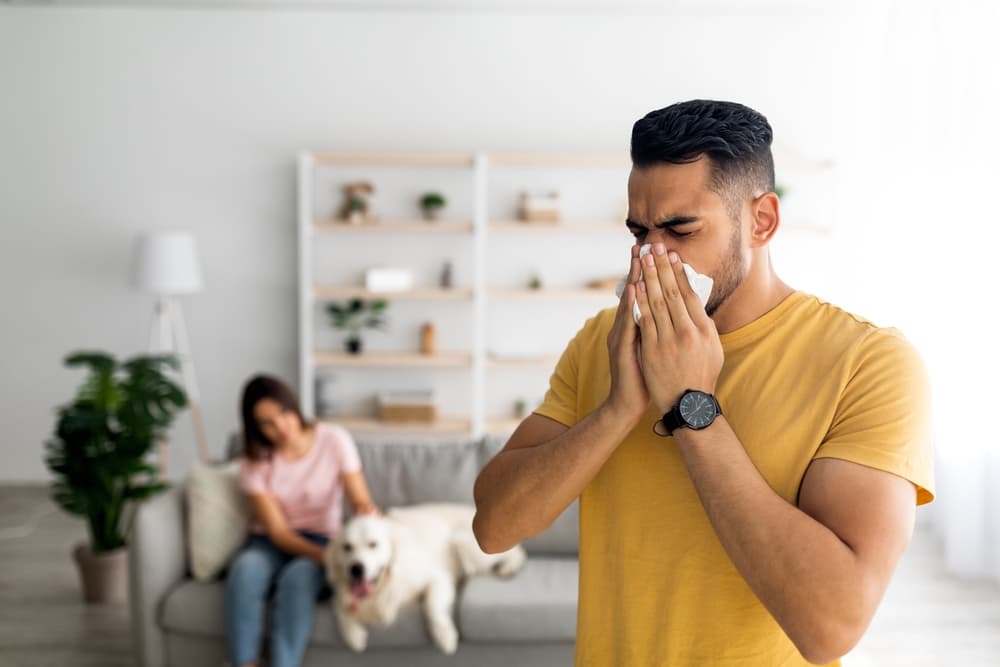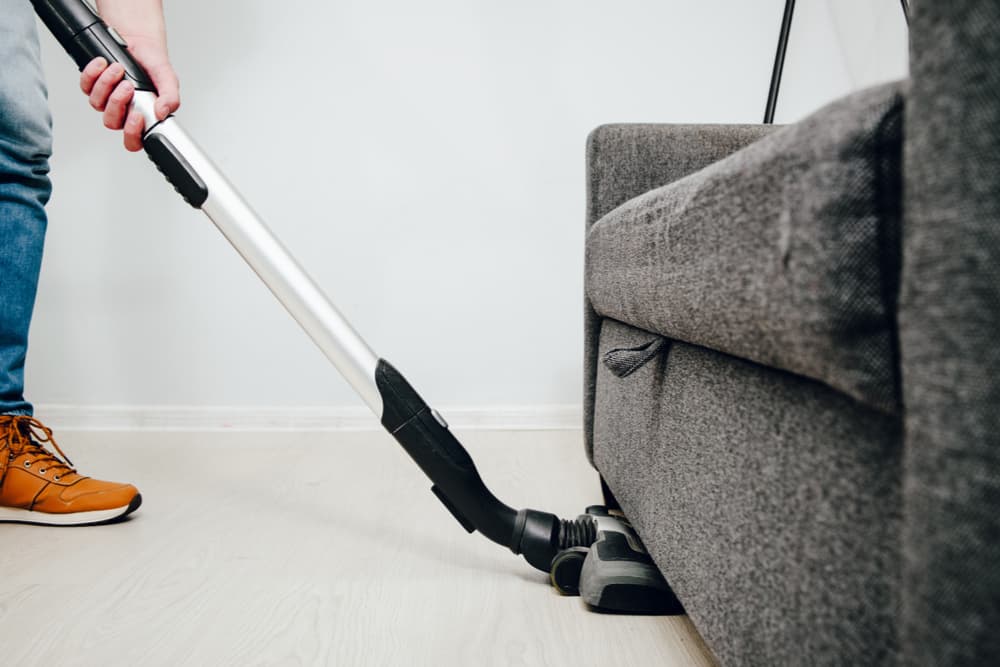Pet Dander: Tips for Dealing with Allergies

From decreased blood pressure and reduced cholesterol levels to more exercise and better cognitive function, time with our beloved pets can be great for our mental and physical health [1]. But what about when cuddling your dog or cat leaves you sneezing, coughing or rubbing your eyes? You may be suffering from allergies to pet dander—and you’re not alone.
It’s estimated that up to 20 percent of people around the world have pet dander allergies [2]. And in the U.S., up to 3 in 10 people with allergies have allergic reactions to cats and dogs [3]. Here’s what causes those reactions, the symptoms to watch for, and how to keep dander at bay.
What is Pet Dander?

Dander is defined as the dead skin cells that all warm-blooded animals are perpetually shedding into their environments. People have it, birds have it, rats have it—and so do cats and dogs. “As humans, our skin is constantly turning over,” says Dr. Sarah Machell, a veterinarian and the medical director of the online vet service Vetster. “Animals have the same turnover.”
Cat or dog dander eventually settles onto surfaces, but any disturbance—vacuuming, shaking out a blanket, or even just walking across a carpet—can send it right back into the air, where it will float around for several hours [4]. Even if you don’t have a cat or dog at home, pet dander can still come inside, smuggled in on your clothes, shoes, or hair.
Animal dander is one reason that, according to Janna Tuck, MD—a private practice allergist in Santa Fe, New Mexico, and a spokesperson for the American College of Allergy, Asthma & Immunology (ACAAI)—“there is no such thing as a hypoallergenic dog or hypoallergenic cat.” That’s because no matter how much hair they do (or don’t) shed, all animals are still releasing dander into their environments.
Still, there are some animals who seem to release more of it than others. Machell says that male dogs and cats tend to produce more allergenic dander than females, and unneutered males release even more dander than neutered males. But in general, the ACAAI explains that allergies from pet dander are not impacted by the length of a pet’s fur or the amount of shedding [5]. In fact, counterintuitive as it may seem, Tuck says long-haired pets may actually prove better for those with dander allergies, simply because they require more frequent vacuuming and cleaning at home.
Pet Dander Allergy: What Causes It?

“If you have a pet dander allergy, what you’re allergic to is the protein part of the dander that pets shed into our environment,” Tuck explains.
“There’s a very strong genetic component to allergies,” she adds. “If you have one parent who has an allergic condition, the children are much more likely to have one. And if both parents have allergies, there’s about a 75 percent chance that each child will have allergies.”
Simply having a parent with any type of allergy raises a child’s chances of also having any type of allergy. For instance, a mom who is allergic to shellfish may have a child who is allergic to dogs—and vice versa.
While genetics are at the core of most allergies, there may also be environmental factors that occur at an early age, Tuck notes. But the specifics of how, what and why still elude allergy experts.
Pet allergens stick to furniture, bedding, and fabrics, according to the American Lung Association [6]. When dander is floating everywhere, often suspended in the air for hours at a time, encountering it is unavoidable—and its miniscule size means it can be inhaled straight into a person’s lungs
Pet Dander Allergy Symptoms

Pet dander allergy symptoms may seem like a cold that hits you out of nowhere if you visit a home or spend time with dogs or cats. That sudden onset of symptoms, Tuck says, makes it clear that pet allergies are almost certainly afoot.
Symptoms of a pet dander allergy include:
- Stuffy or runny nose
- Itchy and watery eyes
- Trouble breathing
- Coughing
- Rashes
- Hives
Allergic reactions to pet dander can be tougher to pinpoint if you live with a dog or cat. Rather than experiencing a sudden onset, your symptoms will likely become chronic, and you may even develop asthma. Tuck says it’s a tipoff when you go away for an extended period—maybe for a vacation or work trip—and notice your symptoms have cleared up. But then when you return home, they come barreling right back.
“That’s when seeing an allergist can be helpful,” she says, since they can perform skin or blood testing for a possible allergy to dander. Not only are allergies uncomfortable, but Tuck says that left untreated, they can lead to asthma.
“I think a lot of people don’t go to see an allergist about what they think is a pet allergy because they assume we’re going to say to get rid of their pet,” she adds. “That’s not true—there are a number of things we can try. Think of your allergist as your friend when it comes to your pet allergy.”
How to Reduce Pet Dander

“Pet dander is so pervasive—usually pets produce a lot of it and it takes a long time for it to get out of the environment,” Tuck says. In fact, even if an animal is no longer there, she says it can take 6 months of diligent cleaning to fully get rid of their dander.
But it’s possible to reduce pet dander in your home while also keeping your dog or cat. Tuck recommends the following strategies for reducing pet dander:
Regular cleaning. This step is essential and includes vacuuming with a HEPA filter in place and damp dusting.
Purify the air. She also suggests making your bedroom a pet-free zone and placing an air purifier in it. And talk to your HVAC specialist, she says, to see what kind of allergen-defense air filters your unit can accommodate.
Groom your pet. Tuck also recommends having your pet regularly groomed and never brushing your dog or cat inside the house. Baths can help, too, if your cat or dog tolerates them.









